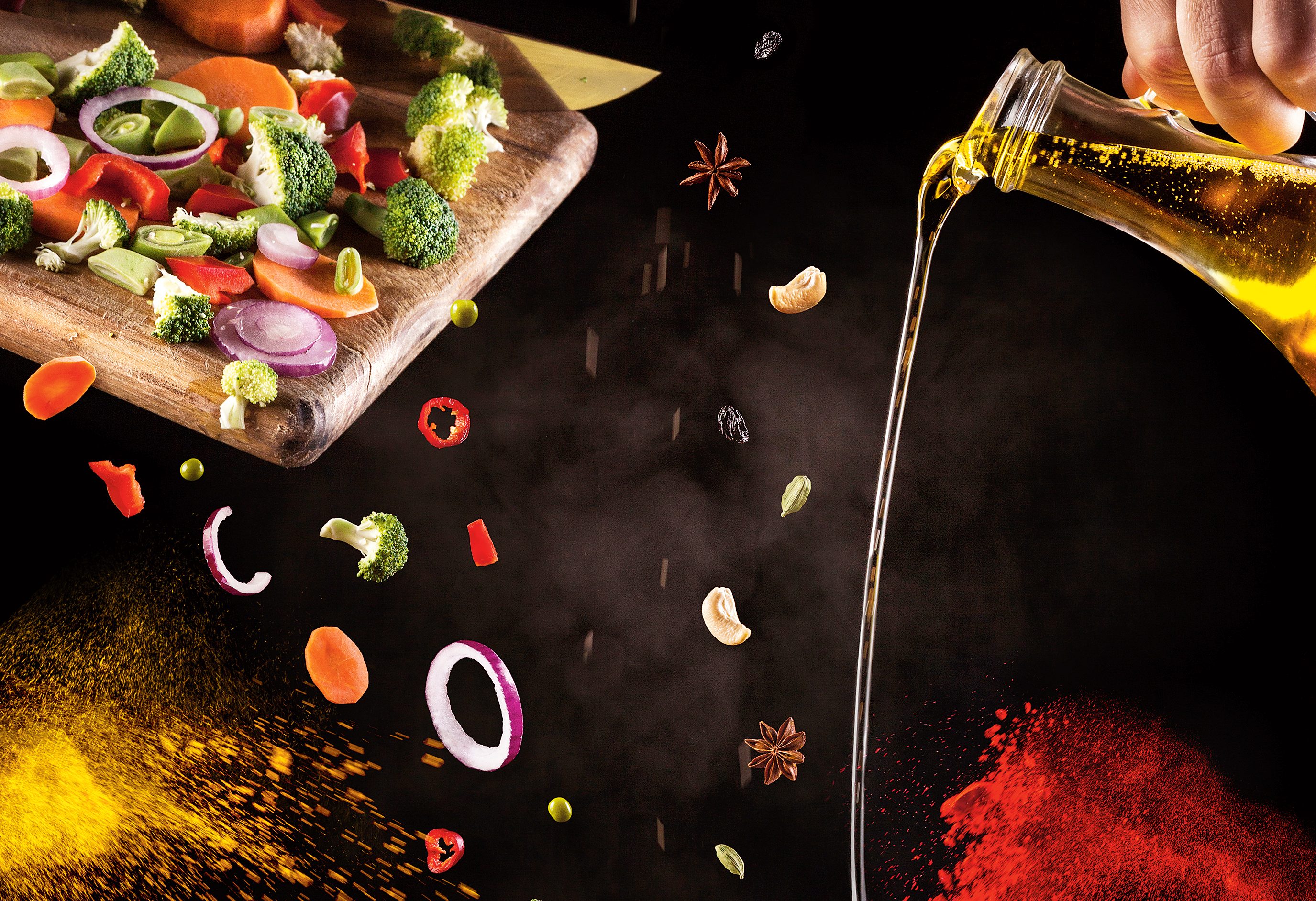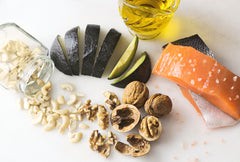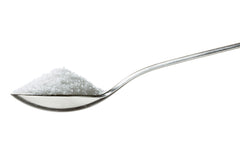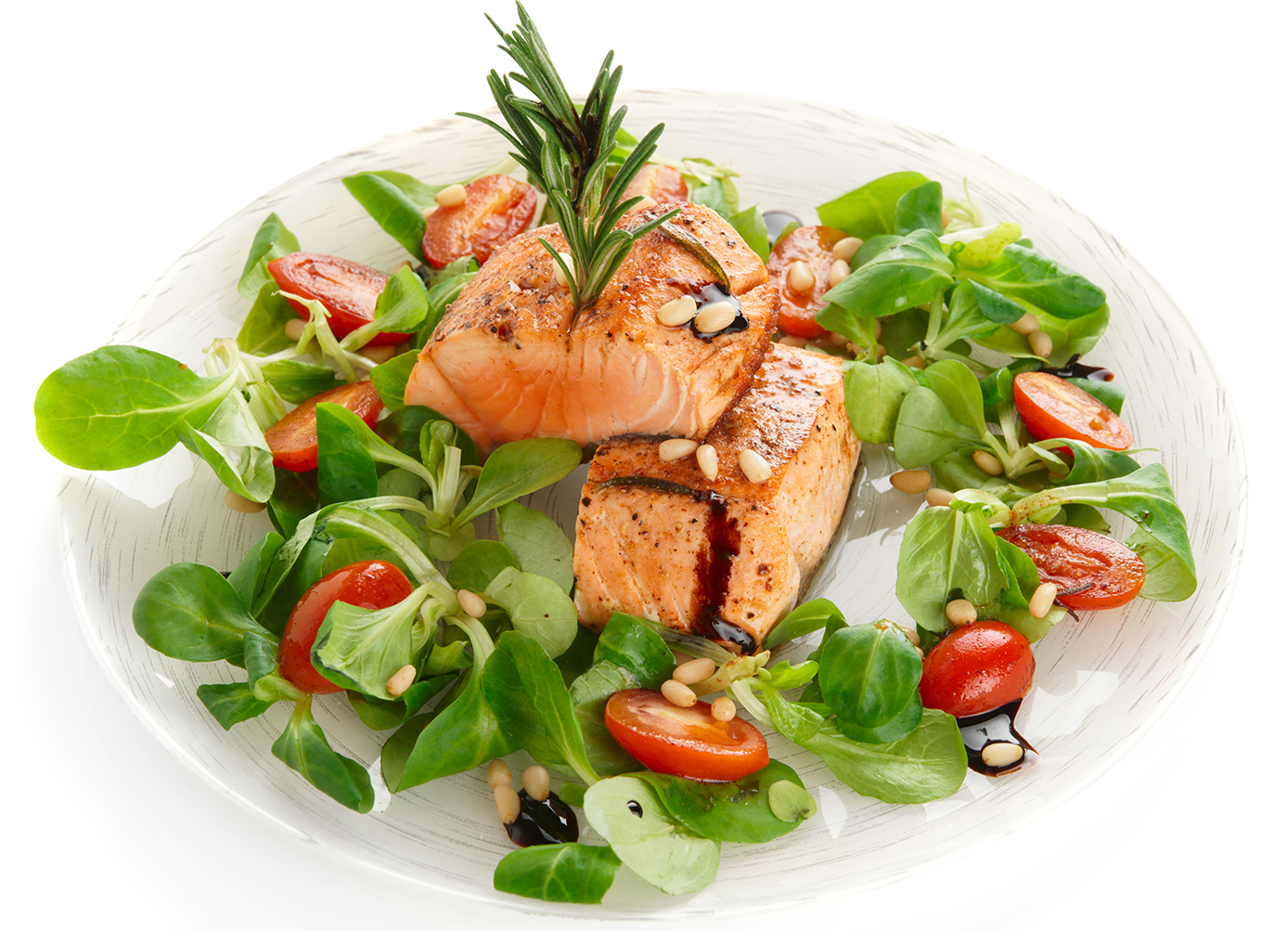There a lot of myths and misconceptions about what you should—and shouldn’t—eat. We’ve got the facts
By Wendy Haaf
You can get mental whiplash trying to reconcile what you read in the headlines or on the cover of the latest diet book with what you thought you knew about how what we eat affects our health. Myths about food seem to multiply in step with the size of the supermarket’s frozen pizza section. Here are the facts about a few popular food myths and misconceptions that have popped up in recent years.

In fact, experts still recommend limiting saturated fat to less than 10 per cent of your daily caloric intake, notes Len Piché, a professor of food and nutrition at Brescia University College in London, ON.
So what’s behind headlines such as “Butter is Back!” and “Vegetable Fat Not the Route to a Healthy Heart”?
That “butter” headline and many like it flashed around the world early in 2014, following the publication of a meta-analysis of 72 studies involving a total of nearly 650,000 people. When researchers crunched the numbers and compared the groups with consumers of the highest and lowest amounts of saturated fat, there didn’t seem to be a difference in the risk for heart attack or other cardiac events, a conclusion that was parroted in countless news stories.
What the media missed was what happened next.
Prominent scientists began pointing out several serious flaws in the analysis. One problem was that the scientists misread the results of one trial on omega-3 fats (found in fatty fish, among other sources) as showing that this nutrient was linked with a slight increase in heart disease risk, while in fact it had a strong positive effect: people who reported eating a lot of it had substantially less heart disease. The authors also ignored a number of randomized trials that found replacing saturated fats with polyunsaturated fats such as soybean oil was linked with a reduction in heart disease risk, while including one trial in which saturated fats were swapped for a vegetable margarine loaded with artificial trans fats, which indisputably have a potent negative effect on heart health. When this latter study was excluded from the analysis, it turned out that the people who’d replaced saturated fats with polyunsaturated fats enjoyed a 19 per cent lower incidence of heart disease.
“In the end, the authors themselves had to admit that replacing saturates with polyunsaturates seemed to reduce heart disease risk in interventional trials,” Piché says. “I think the key is not just to reduce saturated fat, but to replace it with something that seems to be more helpful.”
What about the headlines claiming that vegetable fat isn’t any healthier for your heart than animal fat and may in fact be worse?
These stem from a reanalysis of data from a study conducted more than 40 years ago, in which nearly 9,500 residents of US state mental hospitals and a nursing home were randomly assigned to either a diet rich in saturated fats or a diet containing equivalent amounts of corn oil. While LDL (unhealthy cholesterol) measurements dropped in the corn oil group, the death rate was actually higher among participants who’d experienced the greatest reductions in LDL. However, critics argue the findings are no more than “an interesting historical footnote that has no relevance to current dietary recommendations,” according to Dr. Walter Willett, chair of the department of nutrition at Harvard School of Public Health, in an interview posted on that institution’s website.
In the article, Willett goes on to outline a number of the study’s limitations, including that the original authors estimated they would need to track 10,000 subjects for at least three years to detect any true difference in cardiovascular risk due to diet, but two-thirds of the participants had dropped out by the one-year mark (because, for example, they’d been released from hospital).
Then there’s the vegetable-fat diet itself: subjects in this group were given fake milk, meat, and cheese made with corn oil—highly processed foods that no dietitian would advocate consuming in large quantities. Nor would any nutrition expert recommend eating the very large amounts of corn oil fed to subjects in the vegetable-fat arm of the study, since it’s very high in omega-6 polyunsaturated fats and contains very little omega-3. (While research on plant-source omega-3 fats is more limited than that regarding the marine variety, higher intake seems to be linked with a lowering in cardiovascular risk.)
Instead, most dietitians recommend getting the majority of dietary fat from a varied diet of whole foods such as seeds, nuts, avocados, and fish, as well as from olive oil and other nut and seed oils (and yes, there’s still room in this type of overall healthy diet for a bit of butter). This style of eating fits within both the Mediterranean and DASH (Dietary Approaches to Stop Hypertension) diets, which, according to numerous studies, reduce the risk for a range of health ills, from heart disease and stroke to diabetes and certain cancers.
The trait these diets share is that they contain minimal amounts of animal fat and processed food, and abundant amounts of fruit, vegetables, legumes, and other plant foods.
“The scientific research shows that the more plants you eat, the better,” notes Andy Bellatti, a registered dietitian based in New York and author of the blog Small Bites. “I’m not saying you have to be 100 per cent vegan, but if you’re an omnivore and your diet is 70 per cent plant-based, that’s much healthier than if it was 20 or 30 per cent.” One easy tip: Fill half your plate with vegetables or fruit at every meal.
No, sugar isn’t toxic.
That said, most of us consume too many empty calories in the form of added sugars, thus putting ourselves at increased risk for weight gain, obesity, and associated health problems including Type 2 diabetes and cardiovascular disease.
While foods such as milk, beans, starchy vegetables, and whole grains contain natural sugars, when you eat these foods, “you’re getting vitamins, minerals, and other nutrients that are really important for healthy functioning and even disease prevention,” notes Andrea D’Ambrosio, a registered dietitian in Kitchener, ON, and spokesperson for Dietitians of Canada. “It’s really the sugars that are added to processed foods during manufacturing that we want to limit.” (Added sugars are also known as free sugars.)
The Heart and Stroke Foundation and the World Health Organization recommend capping your consumption of free sugars at 10 per cent of your daily calories. “This would equate to about 12 teaspoons of added sugar a day, which is about half of what people currently consume,” D’Ambrosio says. For the sake of comparison, one 12-ounce can of regular soft drink contains about eight teaspoons. (Piché notes that the American Heart Association advocates aiming even lower: six teaspoons a day for women and nine for men. A teaspoon is equivalent to roughly four grams.)
Recent research suggests that we’re getting most of that sweet stuff in the form of ultra-processed foods, which are nearly devoid of nutrients and typically contain hefty amounts of salt and unhealthy fat, as well—products including packaged baked goods and snacks, instant soups and noodles, and fish and chicken nuggets. A study that drew on dietary data from a cross-section of more than 9,000 people in the United States found such consumables accounted for nearly 90 per cent of calories from added sugars (and nearly 60 per cent of overall calories). Perhaps not surprisingly, subjects who consumed the smallest amounts of these foods were getting fewer than 10 per cent of their calories from added sugars. While their health dangers may be only partially due to their sugar consumption, “according to research in three countries—Brazil, America, and Canada—the percentage of ultra-processed foods in a person’s diet seems to correlate quite well with non-communicable diseases,” such as Type 2 diabetes, notes Dr. Yoni Freedhoff, an Ottawa physician specializing in obesity and the author of The Diet Fix.
Clearly, cooking and baking from scratch more often is a huge step in the right direction if you’re trying to curb your sugar consumption. Another key strategy is to read food labels.
“Look at an item’s nutrition facts panel and compare the number of grams of sugar in that product to a similar product, then choose the one with the smaller amount,” D’Ambrosio suggests. Unfortunately, current labelling doesn’t discriminate between naturally occurring sugars in foods such as yogourt (which contains lactose sugar) and the free type, so it’s advisable to check the ingredients list for sugar synonyms (words ending in “ose,” as well as things such as honey and fruit purée or concentrate). Better yet, consider buying the plain variety and adding your own sweetener, since you’ll almost certainly use less than the manufacturer does.
It’s worth remembering that your body rapidly breaks starchy low-fibre foods made from refined grains down into sugars, so these are no better for your blood sugar or insulin levels than foods high in free sugars, notes Patricia Chuey, a British Columbia-based registered dietitian and regular contributor to The Province newspaper. “A white bagel with a bit of jam or honey is as much of a sugar bomb as a can of pop,” she says, adding that the same goes for many alcoholic beverages. Half a standard 750 ml bottle of white wine, for instance, can pack 310 calories and nearly four grams of sugar, not to mention an additional 10 grams of carbohydrates, which your body also converts into sugar.
Processed meats such as bacon, ham, sausage, and deli slices have been linked to an increased risk for colorectal cancers, but they’re not as big a cancer risk as smoking. And while we’re on the subject of breakfast foods, it’s not likely that eating eggs is as bad for your arteries as puffing on cigarettes.
When the World Health Organization announced that it was adding processed meats to its list of definite carcinogens alongside substances such as tobacco, this was widely misconstrued as processed meats posing an equivalent cancer threat. They don’t.
What is equivalent is the strength of the scientific evidence connecting both smoking and eating processed meats to cancer risk. Smoking, however, presents a far greater risk. To put the numbers in perspective, one of the initial studies on smoking and cancer risk found that men who smoked about 20 cigarettes a day were 25 times more likely to develop lung cancer than were non-smokers, and even three cigarettes a day was linked with a sixfold increase. (Since that study, we’ve learned that smoking increases the risk for several other cancers, too, albeit not as powerfully.) At the moment, an estimated one in 12 Canadian men and one in 15 Canadian women will develop lung cancer over a lifetime, with the risk being much lower in never-smokers and much higher in heavy smokers. According to Cancer Research UK, in that jurisdiction, approximately 56 of every 1,000 (about one in 18) people who eat the smallest quantities of processed and red meats will develop bowel cancer over a lifetime, versus 66 of every 1,000 (about one in 15) people who consume the largest amounts. (Red meat is considered a “probable’’ carcinogen.)
Since colon cancer risk rises with even very modest consumption of processed meats (50 grams a day—about the equivalent of one small hot dog—is linked with a 36 per cent increase in risk, according to the American Institute for Cancer Research), “my advice to people is to limit them,” says Rosie Schwartz, a Toronto registered dietitian and author of The Enlightened Eater’s Whole Foods Guide. “That doesn’t mean you can never eat them, but don’t make them a regular food.”
Red meat, on the other hand, appears to raise risk only beyond a certain level of consumption. “If you keep it to about 18 ounces a week, it doesn’t increase risk,” Schwartz adds, “so it’s not the same as processed meat.”
Now that we’ve cleared that up, what about the health aspersions that were cast on eggs a few years ago?
Research conducted at Western University found that the number of eggs people reported eating on a regular basis over many years correlated with the amount of plaque buildup in their arteries, and the 20 per cent of participants with the highest egg consumption had about two-thirds as much plaque accumulation as the heaviest smokers. Major caveats, however, were skimmed over in most of the media coverage.
For starters, studies like these rely on subjects’ memories, which can be less than accurate. And researchers didn’t take into account other foods in the diet, such as the fatty bacon that might typically be consumed along with eggs. What’s more, participants weren’t representative of the general population: they’d been referred to a specialized clinic specifically because they were considered at high risk for heart attack and stroke based on established risk factors such as family history, high blood pressure, and a previous transient ischemic attack (a sort of warning mini-stroke).
So should you eat eggs?
“They’re a terrific, cheap source of nutrition, particularly when you don’t feel like cooking,” Schwartz says. She recommends moderating your intake only if you have diabetes, since the research isn’t clear whether heavy egg intake boosts heart disease risk in this population. She advises such people “not to eat two a day, but if they’re eating an egg daily, I don’t think there’s a problem with that.”
Protein is an important nutrient for maintaining muscle mass and curbing appetite—but that doesn’t mean the more of it you eat, the better.
According to Dietitians of Canada’s Andrea D’Ambrosio, “Research shows that the amount of protein we need to maintain muscle mass is about 20 to 30 grams per meal,” or roughly the amount in a four-ounce palm-sized portion of meat. “At 30 grams, the benefit maxes out, so if we have 60, we’re not necessarily benefiting from the extra.”
And it doesn’t even out if you skimp at another meal, since studies also suggest spreading your intake across the day is the best strategy for keeping your muscles robust.
Breakfast is the meal most likely to fall far short of the target amount of protein, D’Ambrosio says; for instance, a bowl of cereal with a cup of milk might contain 12 grams, with nine coming from the milk. Higher-protein options include Greek yogourt, with 16 grams per three-quarter cup serving, and cottage cheese, which contains about 15 grams per half-cup. Adding a half cup of oatmeal and two tablespoons of almonds—each of which contain roughly four grams of protein—to your Greek yogourt will bring your total to 24 grams.
Furthermore, you can get too much of a good thing, Schwartz explains. Not only can an excess contribute to a calorie surplus, she says, but “if you’re eating high amounts of protein combined with large amounts of sodium, you’re more likely to develop kidney stones.” An overabundance of animal protein, in particular, isn’t a good idea for people who are diabetic or prediabetic, she adds, because it places additional stress on the kidneys, which are already compromised in people with these conditions, even when their blood sugars are well controlled.
“Limiting animal protein is important because it will control the kidney function better,” Schwartz says.
Contrary to what the authors of the books Wheat Belly and Grain Brain assert, eating foods containing whole wheat (and therefore a protein mixture called gluten) does not cause fat to accumulate around your middle, nor does it fog your mental function.
“If you look at the most recent data, as many as 30 per cent of Americans are trying to be gluten-free or to reduce the amount of gluten in their diets,” notes Tim Caulfield, research director of the Health Law Institute at the University of Alberta in Edmonton and author of Is Gwyneth Paltrow Wrong About Everything? “Yet pretty well everyone in the nutrition community agrees that it’s not an evidence-based weight-loss strategy, nor does it have any particular health benefits unless you have celiac disease.” (In celiac disease, gluten causes the immune system to attack the lining of the small intestine, impairing nutrient absorption and potentially leading to other problems, such as osteoporosis.)
“In fact, we know that whole grains are good for us,” he adds, explaining that in study after study, diets rich in these foods have been tied to a reduced risk for ills such as Type 2 diabetes, stroke, and colorectal cancers. What’s more, many packaged gluten-free foods are largely composed of ingredients that are low in fibre and nutritional value, such as potato starch and rice flour.
But what about all the scientific-sounding explanations offered by the authors of these two books to support their theories?
Schwartz, who dug into the research supposedly bolstering the writers’ claims, says the authors made numerous leaps in reasoning that aren’t supported by logic. For example, she explains, “when they talk about gluten and brain health, they’re quoting studies of people who have celiac disease,” which don’t apply to the overwhelming majority of the population, since only about one in 100 people has the condition.
By contrast, the amount of research supporting what constitutes a healthy overall eating pattern is so overwhelming that at a November 2015 conference called Finding Common Ground, scientists who advocated diets ranging from vegetarian and vegan to Paleo all agreed on a list of key characteristics that you can undoubtedly predict, particularly after reading this article: lots of vegetables, fruits, legumes, nuts, whole grains, seafood, and low- or non-fat dairy; lower amounts of red and processed meats, and still more scant quantities of sugar-sweetened foods and drinks and refined grains.
BC-based registered dietitian Patricia Chuey visualizes this mountain of evidence as a football stadium packed floor to ceiling with scientific studies, and yet, “some people ignore that and glom onto the one paper airplane that flies away,” she says, “which is the latest diet”—or headline.












